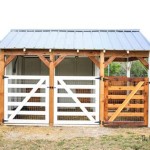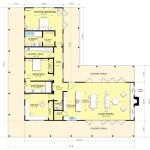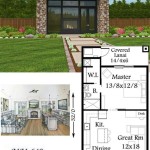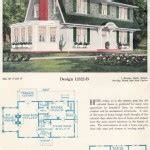A plot plan for a house is a scaled drawing that shows the layout of the house and its relationship to the surrounding land. It typically includes the location of the house on the property, the dimensions of the house, the location of windows and doors, and the location of any other structures on the property, such as a garage or shed. Plot plans are used to help plan the construction of a house, to design the landscaping, and to obtain building permits.
Plot plans can be created by hand or using computer-aided design (CAD) software. Hand-drawn plot plans are typically less precise than CAD-generated plot plans, but they can be more easily modified. CAD-generated plot plans are more precise and can be used to create a variety of drawings, such as floor plans, elevations, and sections.
The main body of this article will discuss the different types of plot plans, the information that is typically included on a plot plan, and the uses of plot plans.
Plot plans are an essential part of the home building process. They provide a visual representation of the layout of your house and its relationship to the surrounding land. Here are 10 important points to keep in mind when creating a plot plan for your house:
- Include the location of the house on the property.
- Include the dimensions of the house.
- Include the location of windows and doors.
- Include the location of any other structures on the property.
- Include the dimensions of the property.
- Include the location of any easements or other restrictions on the property.
- Include the location of any utilities on the property.
- Include the location of any trees or other vegetation on the property.
- Include the location of any slopes or other changes in elevation on the property.
- Include a scale and a north arrow.
By following these tips, you can create a plot plan that will help you plan the construction of your house, design the landscaping, and obtain building permits.
Include the location of the house on the property.
The location of the house on the property is one of the most important factors to consider when creating a plot plan. The location of the house will determine the amount of sunlight the house receives, the views from the house, and the privacy of the house. It is also important to consider the location of the house in relation to the other structures on the property, such as the garage, shed, and pool.
Factors to consider when choosing the location of the house on the property:
- Sun exposure: The amount of sunlight a house receives can have a significant impact on the comfort and energy efficiency of the house. Ideally, the house should be positioned so that it receives sunlight throughout the day, but not so much sunlight that it becomes too hot in the summer.
- Views: The views from the house can also be a major factor in determining the location of the house. If there are any particularly desirable views on the property, the house should be positioned so that these views can be enjoyed from the main living areas of the house.
- Privacy: The privacy of the house is another important factor to consider when choosing the location of the house. The house should be positioned so that it is not too close to the property line or to any other structures on the property. This will help to ensure that the occupants of the house have privacy from their neighbors and from other people on the property.
- Access: The location of the house should also consider access to the property. The house should be positioned so that it is easy to get to from the street and from other parts of the property. This will help to ensure that the occupants of the house can easily come and go, and that they can easily access the other parts of the property.
By considering all of these factors, you can choose the best location for the house on your property.
Include the dimensions of the house.
The dimensions of the house are an important part of the plot plan. The dimensions will determine the size of the house and the amount of space that is available for different activities. The dimensions will also affect the cost of construction.
There are a few things to consider when determining the dimensions of the house:
- The number of people who will be living in the house: The number of people who will be living in the house will have a big impact on the size of the house. A larger family will need a larger house than a smaller family.
- The type of activities that will be taking place in the house: The type of activities that will be taking place in the house will also affect the size of the house. A house that will be used for entertaining will need to be larger than a house that will be used primarily for sleeping and eating.
- The budget for the house: The budget for the house will also affect the size of the house. A larger house will cost more to build than a smaller house.
Once you have considered all of these factors, you can start to determine the dimensions of the house. It is important to remember that the dimensions of the house are not set in stone. You can make changes to the dimensions as needed to meet your specific needs.
Include the location of windows and doors.
The location of windows and doors is an important consideration when creating a plot plan for your house. The location of windows and doors will affect the amount of natural light that enters the house, the ventilation of the house, and the views from the house. It is also important to consider the location of windows and doors in relation to the other structures on the property, such as the garage, shed, and pool.
Factors to consider when choosing the location of windows and doors:
- Natural light: The amount of natural light that enters a house can have a significant impact on the comfort and energy efficiency of the house. Windows should be placed so that they allow natural light to enter the house throughout the day, but not so much sunlight that the house becomes too hot in the summer.
- Ventilation: The ventilation of a house is also important for the comfort and health of the occupants. Windows and doors should be placed so that they allow air to circulate throughout the house. This will help to prevent the house from becoming too stuffy or humid.
- Views: The views from the house can also be a major factor in determining the location of windows and doors. If there are any particularly desirable views on the property, windows and doors should be placed so that these views can be enjoyed from the main living areas of the house.
- Privacy: The privacy of the house is another important factor to consider when choosing the location of windows and doors. Windows and doors should be placed so that they do not overlook any private areas on the property or on neighboring properties. This will help to ensure that the occupants of the house have privacy from their neighbors and from other people on the property.
- Access: The location of windows and doors should also consider access to the property. Windows and doors should be placed so that they are easy to get to from the outside of the house. This will help to ensure that the occupants of the house can easily come and go, and that they can easily access the other parts of the property.
By considering all of these factors, you can choose the best location for the windows and doors in your house.
Include the location of any other structures on the property.
In addition to the house, there may be other structures on the property, such as a garage, shed, pool, or deck. The location of these structures should be included on the plot plan. The location of these structures will affect the overall layout of the property and the amount of usable space that is available.
When choosing the location of other structures on the property, there are a few things to consider:
- The purpose of the structure: The purpose of the structure will determine its location. For example, a garage should be located close to the house so that it is easy to access. A shed can be located further away from the house, as it is not used as frequently.
- The size of the structure: The size of the structure will also affect its location. A large structure, such as a garage, will need to be located on a larger lot. A smaller structure, such as a shed, can be located on a smaller lot.
- The access to the structure: The location of the structure should also consider access to the structure. The structure should be located so that it is easy to get to from the house and from other parts of the property. This will help to ensure that the occupants of the house can easily access the structure.
- The views from the structure: The views from the structure should also be considered when choosing its location. If there are any particularly desirable views on the property, the structure should be located so that these views can be enjoyed from the structure.
- The privacy of the structure: The privacy of the structure should also be considered when choosing its location. The structure should be located so that it is not too close to the property line or to any other structures on the property. This will help to ensure that the occupants of the structure have privacy from their neighbors and from other people on the property.
By considering all of these factors, you can choose the best location for any other structures on your property.
Once you have determined the location of all of the structures on your property, you can start to create a plot plan. A plot plan is a scaled drawing that shows the layout of your property and the location of all of the structures on the property. Plot plans can be used to help plan the construction of new structures, to design the landscaping, and to obtain building permits.
Include the dimensions of the property.
The dimensions of the property are an important part of the plot plan. The dimensions will determine the amount of land that is available for the house, other structures, and landscaping. The dimensions will also affect the cost of the property and the property taxes.
- The size of the house: The size of the house will be limited by the dimensions of the property. A larger house will require a larger lot. A smaller house can be built on a smaller lot.
- The location of other structures: The location of other structures on the property, such as a garage, shed, pool, or deck, will also be affected by the dimensions of the property. The size and location of these structures will need to be considered when planning the layout of the property.
- The amount of landscaping: The amount of landscaping that can be done on the property will also be affected by the dimensions of the property. A larger property will have more space for landscaping. A smaller property will have less space for landscaping.
- The cost of the property: The cost of the property will be affected by the dimensions of the property. A larger property will typically cost more than a smaller property. This is because larger properties are in higher demand and have more potential for development.
By considering all of these factors, you can determine the best dimensions for your property. It is important to remember that the dimensions of the property are not set in stone. You can adjust the dimensions as needed to meet your specific needs.
Include the location of any easements or other restrictions on the property.
Easements and other restrictions on the property can affect the use and development of the property. Easements are legal rights that allow someone other than the property owner to use a portion of the property for a specific purpose. For example, an easement may allow a utility company to install and maintain power lines on the property. Other restrictions on the property may include zoning laws, deed restrictions, and building codes.
- Easements: Easements can be created for a variety of purposes, such as access, utilities, and drainage. It is important to be aware of any easements on the property before purchasing or developing the property. This will help to ensure that the property can be used for the intended purpose.
- Zoning laws: Zoning laws regulate the use of land within a specific area. Zoning laws may restrict the type of development that is allowed on the property. For example, a property may be zoned for residential use only. This means that the property cannot be used for commercial or industrial purposes.
- Deed restrictions: Deed restrictions are restrictions that are placed on the property by the deed. Deed restrictions may restrict the use of the property, the type of improvements that can be made to the property, and the type of activities that can be conducted on the property.
- Building codes: Building codes regulate the construction of buildings and other structures on the property. Building codes may restrict the size, height, and design of buildings. Building codes may also require certain safety features to be installed in buildings.
It is important to be aware of any easements or other restrictions on the property before purchasing or developing the property. This will help to ensure that the property can be used for the intended purpose and that the development complies with all applicable laws and regulations.
Include the location of any utilities on the property.
The location of utilities on the property is an important consideration when creating a plot plan for your house. Utilities such as water, sewer, gas, and electricity are essential for the operation of a house. The location of these utilities will affect the cost of construction and the overall layout of the property.
- Water: The location of the water source will determine the location of the water lines and fixtures in the house. The water source may be a public water main, a well, or a cistern. The location of the water source will also affect the cost of water service.
- Sewer: The location of the sewer line will determine the location of the sewer lines and fixtures in the house. The sewer line may be a public sewer line or a septic tank. The location of the sewer line will also affect the cost of sewer service.
- Gas: The location of the gas line will determine the location of the gas lines and fixtures in the house. The gas line may be a public gas line or a propane tank. The location of the gas line will also affect the cost of gas service.
- Electricity: The location of the electrical lines will determine the location of the electrical lines and fixtures in the house. The electrical lines may be public electrical lines or a generator. The location of the electrical lines will also affect the cost of electrical service.
It is important to consider the location of all utilities on the property when creating a plot plan. This will help to ensure that the house is properly connected to all essential utilities and that the overall layout of the property is efficient and cost-effective.
Include the location of any trees or other vegetation on the property.
The location of trees and other vegetation on the property is an important consideration when creating a plot plan for your house. Trees and other vegetation can provide shade, privacy, and beauty to a property. However, they can also block sunlight, damage foundations, and attract pests. It is important to carefully consider the location of trees and other vegetation when planning the layout of your house and property.
- Trees: Trees can provide shade, privacy, and beauty to a property. However, they can also block sunlight, damage foundations, and attract pests. When planting trees, it is important to consider the size and shape of the tree at maturity. It is also important to consider the location of the tree in relation to the house and other structures on the property.
- Shrubs: Shrubs can provide privacy and beauty to a property. They can also be used to create hedges or borders. When planting shrubs, it is important to consider the size and shape of the shrub at maturity. It is also important to consider the location of the shrub in relation to the house and other structures on the property.
- Flowers: Flowers can add color and beauty to a property. They can also attract pollinators, such as bees and butterflies. When planting flowers, it is important to consider the amount of sunlight the flowers need. It is also important to consider the location of the flowers in relation to the house and other structures on the property.
- Other vegetation: Other vegetation, such as grasses and groundcovers, can also be used to add beauty and interest to a property. When planting other vegetation, it is important to consider the amount of sunlight the vegetation needs. It is also important to consider the location of the vegetation in relation to the house and other structures on the property.
By considering all of these factors, you can choose the best location for trees and other vegetation on your property. This will help to ensure that the trees and other vegetation provide the desired benefits without causing any problems.
Include the location of any slopes or other changes in elevation on the property.
The location of any slopes or other changes in elevation on the property is an important consideration when creating a plot plan for your house. Slopes and changes in elevation can affect the cost of construction, the drainage of the property, and the overall layout of the house and property. It is important to carefully consider the location of any slopes or changes in elevation when planning the layout of your house and property.
- Construction costs: Slopes and changes in elevation can increase the cost of construction. This is because special techniques and materials may be required to build on a slope or change in elevation. For example, a retaining wall may be required to prevent soil erosion on a slope. The cost of a retaining wall will vary depending on the size and complexity of the wall.
- Drainage: Slopes and changes in elevation can also affect the drainage of the property. Water can run off of slopes and cause flooding or erosion. It is important to consider the drainage of the property when planning the layout of the house and property. This may involve installing drainage systems, such as gutters and downspouts, to redirect water away from the house and property.
- Layout of the house and property: Slopes and changes in elevation can also affect the layout of the house and property. The house may need to be built on a different level than the rest of the property. This may require the use of stairs or ramps to access the different levels of the house and property. The layout of the house and property may also need to be adjusted to account for any changes in elevation.
- Views: Slopes and changes in elevation can also affect the views from the house and property. A house that is built on a slope may have better views than a house that is built on a flat lot. However, it is important to consider the orientation of the house on the slope. A house that is built on the north side of a slope may not have as good views as a house that is built on the south side of a slope.
By considering all of these factors, you can choose the best location for your house and property on a slope or other change in elevation. This will help to ensure that the house and property are built safely and efficiently, and that the views from the house and property are maximized.
Include a scale and a north arrow.
A scale and a north arrow are two essential elements of a plot plan. The scale tells you the relationship between the size of the drawing and the size of the actual property. The north arrow tells you which direction is north. This information is important for understanding the layout of the property and for planning construction or landscaping projects.
- Accuracy: A scale and a north arrow help to ensure the accuracy of the plot plan. Without a scale, it would be difficult to determine the actual size of the property or the distance between different features. Without a north arrow, it would be difficult to orient the plot plan correctly on the ground.
- Communication: A scale and a north arrow help to communicate the information on the plot plan clearly and concisely. By providing a common reference point, the scale and north arrow make it easy for everyone involved in a construction or landscaping project to understand the layout of the property.
- Planning: A scale and a north arrow are essential for planning construction or landscaping projects. The scale allows you to determine the actual size of different features on the property, such as the house, garage, or patio. The north arrow allows you to orient the plot plan correctly on the ground, which is important for determining the location of utilities, drainage, and other features.
- Legal requirements: In many cases, a scale and a north arrow are required by law for plot plans that are submitted for building permits or other regulatory purposes. By including a scale and a north arrow, you can ensure that your plot plan meets all applicable requirements.
Including a scale and a north arrow on your plot plan is an important step in ensuring the accuracy, communication, planning, and legal compliance of your project.










Related Posts








